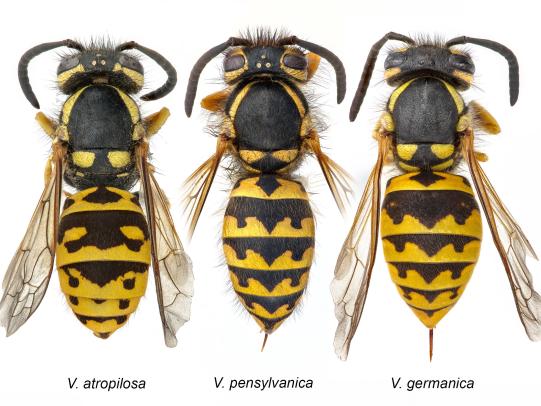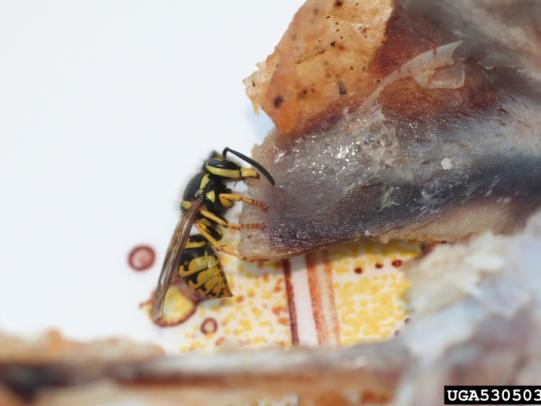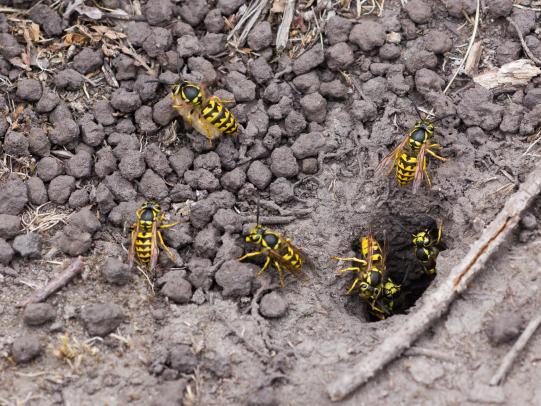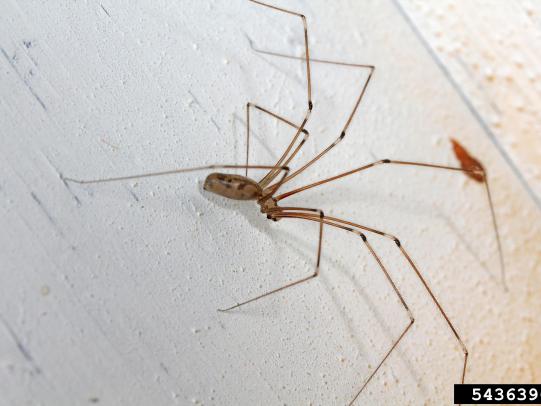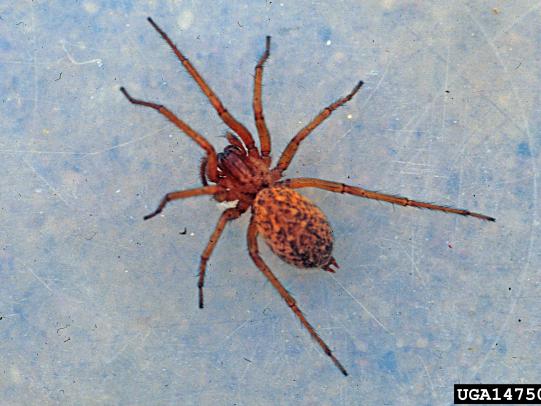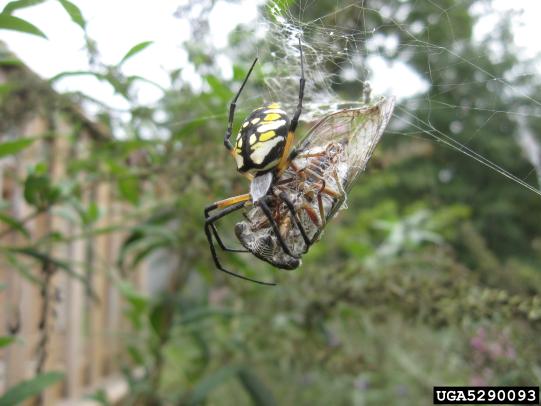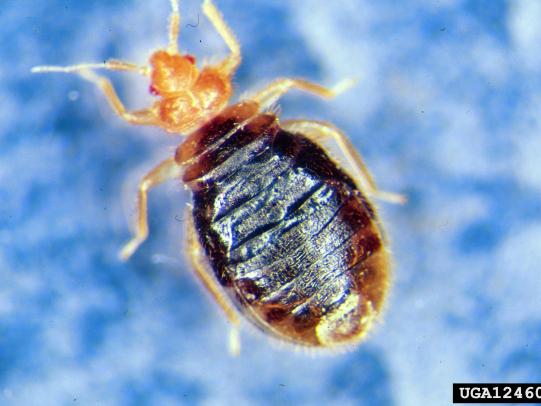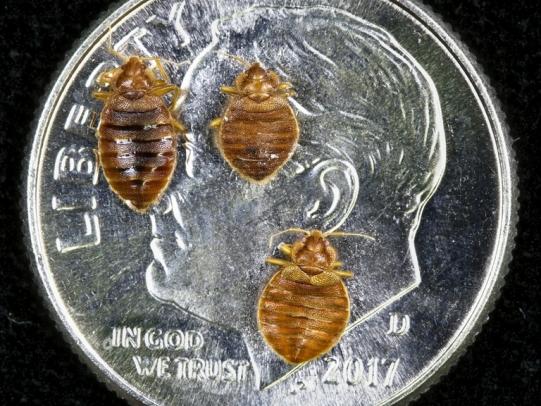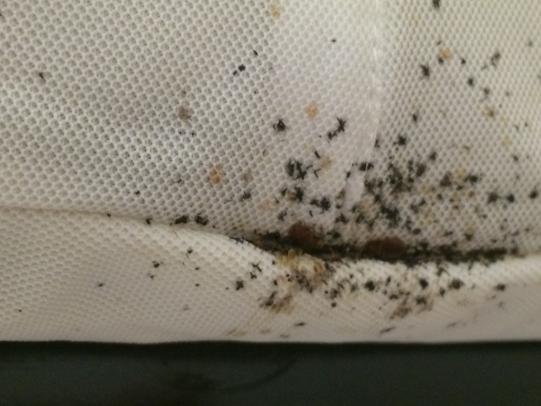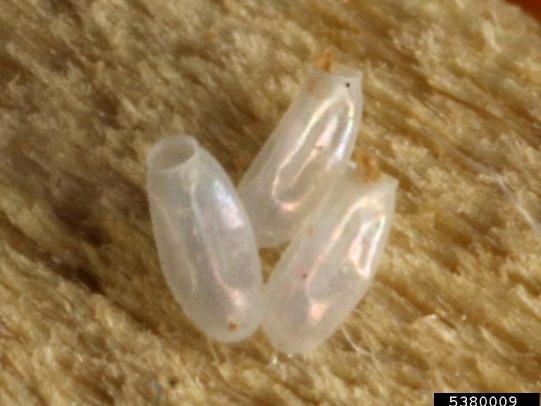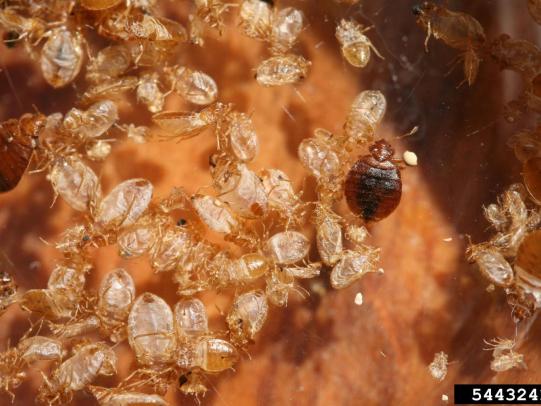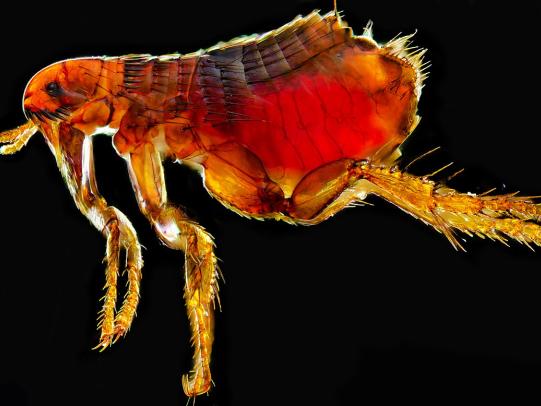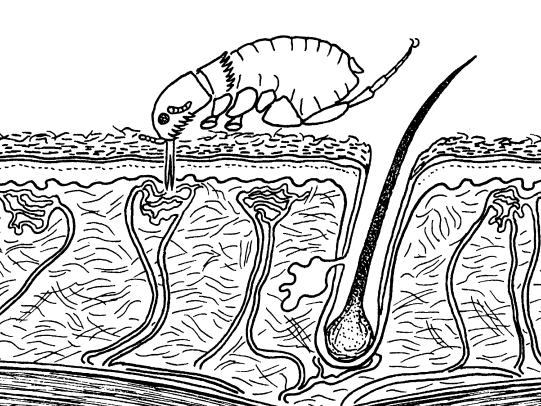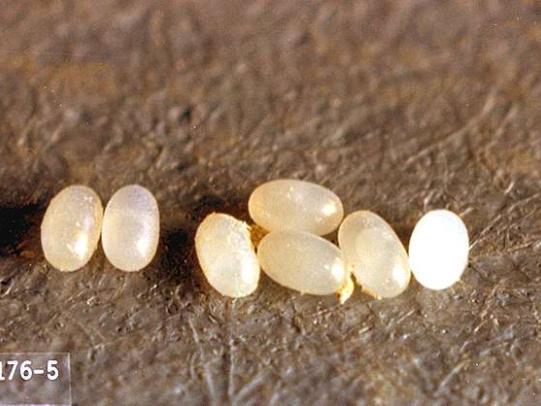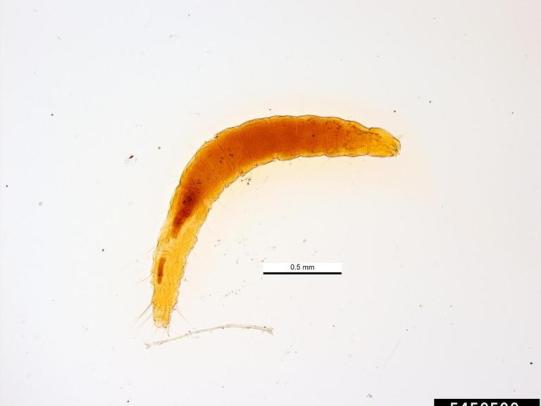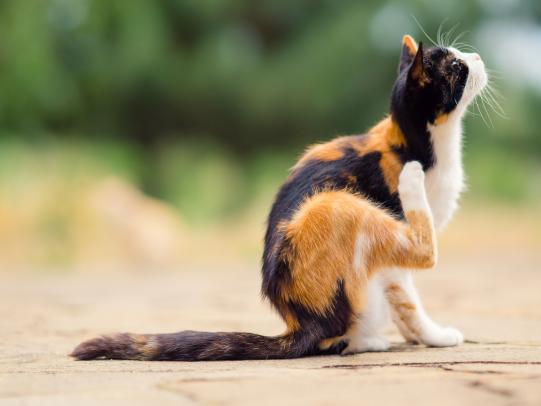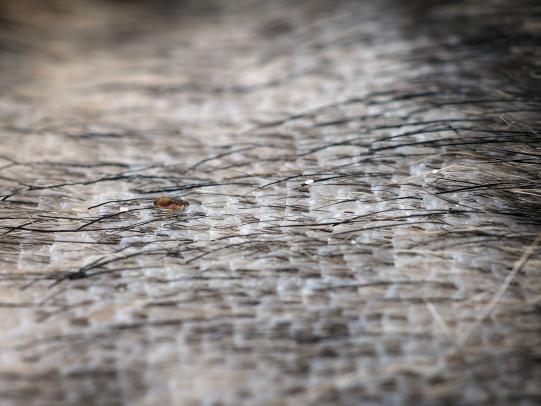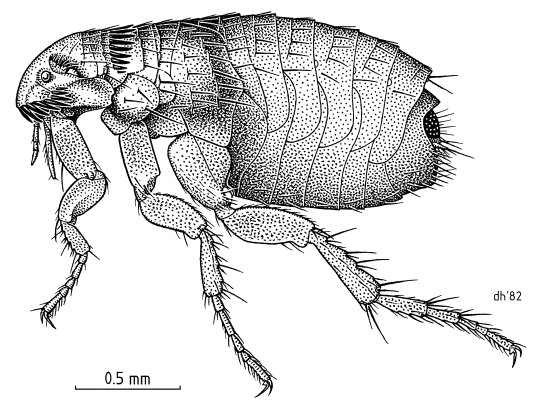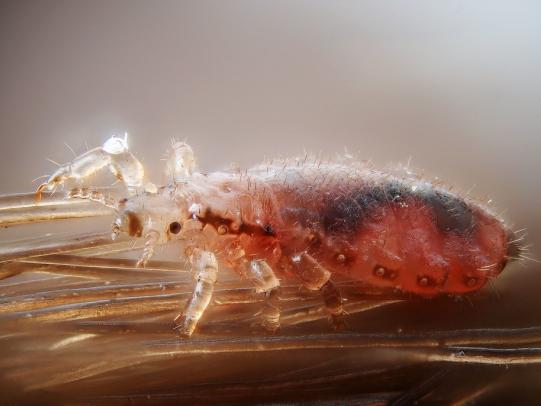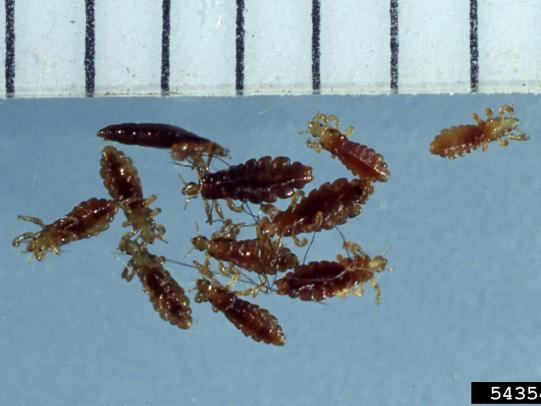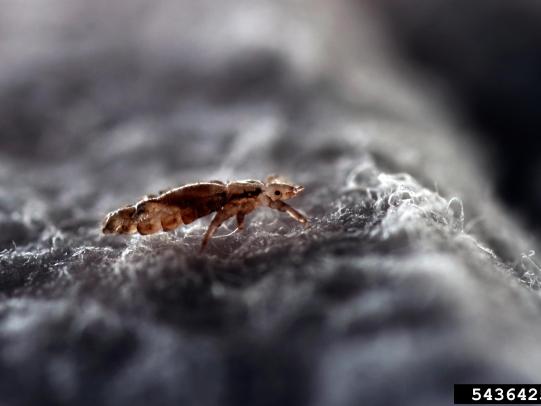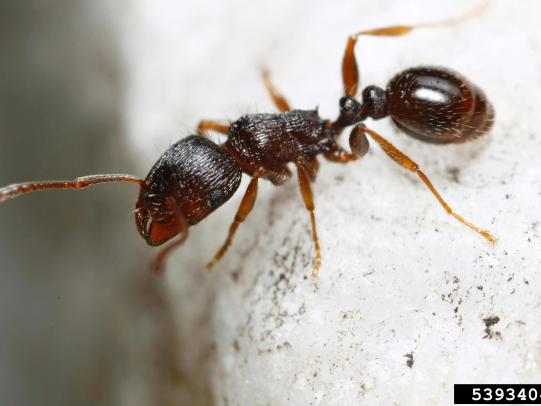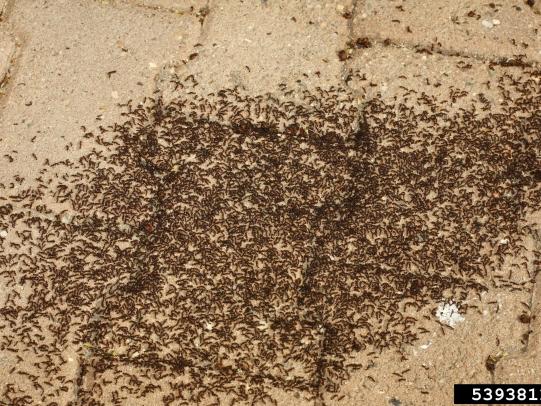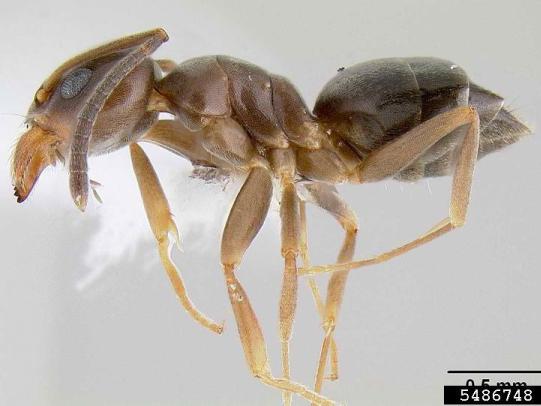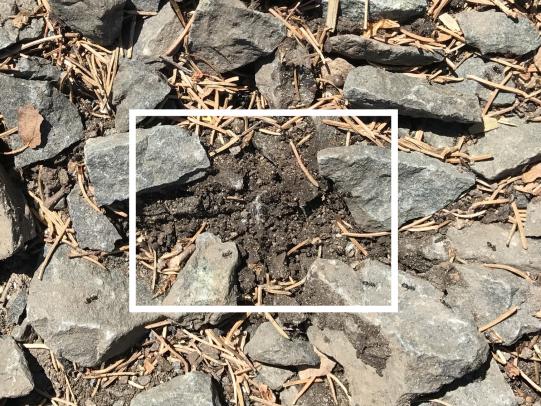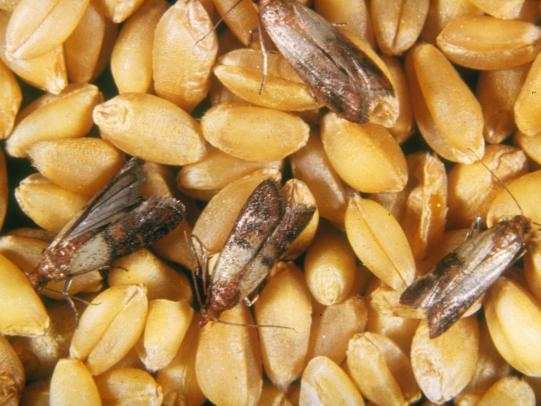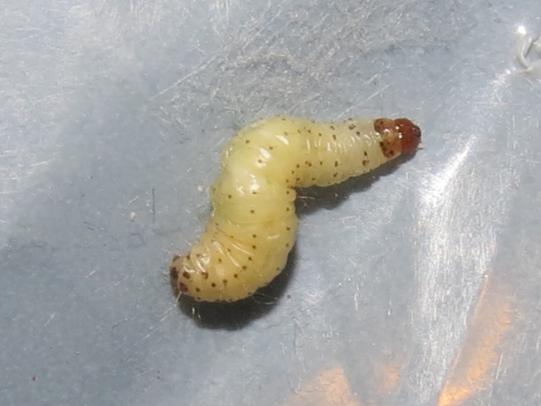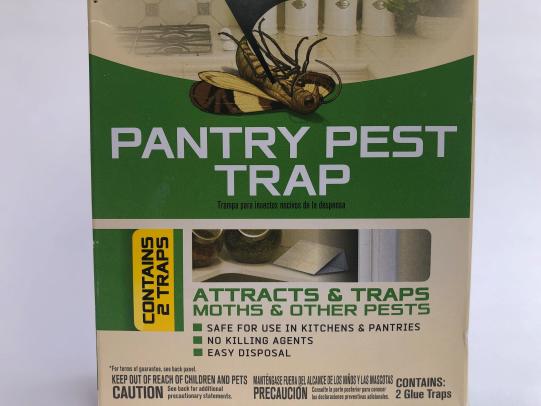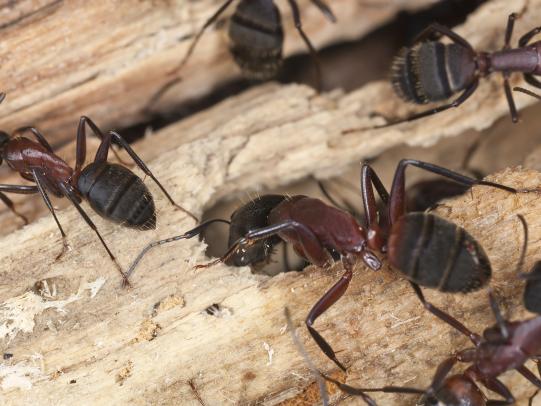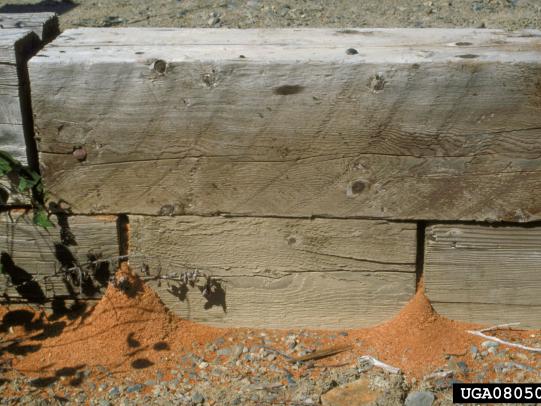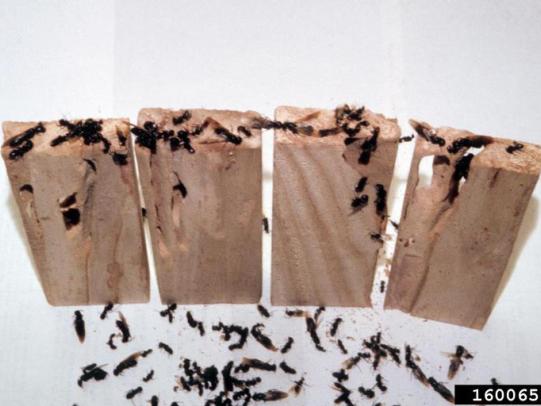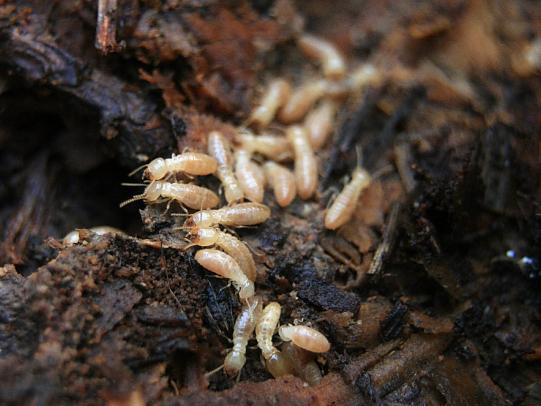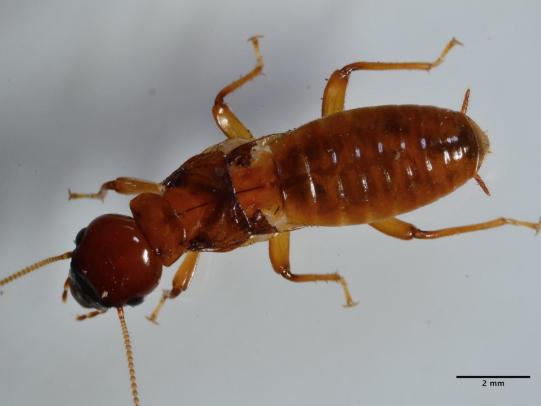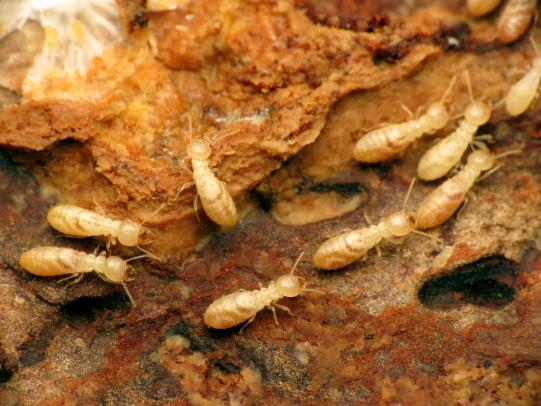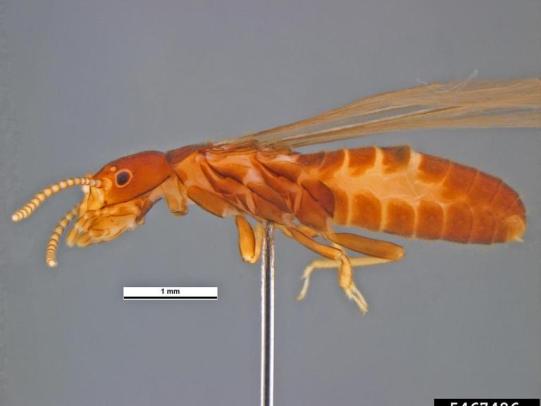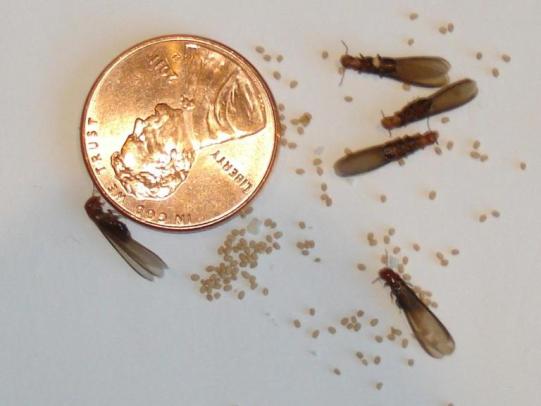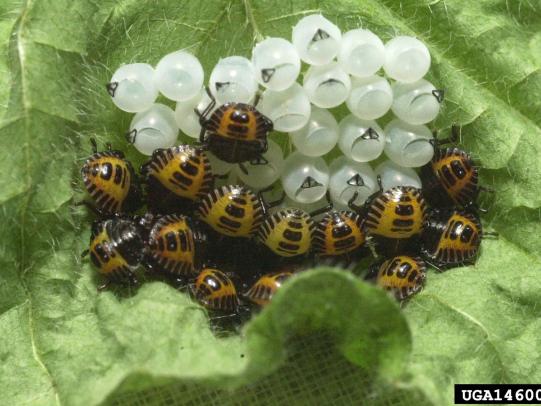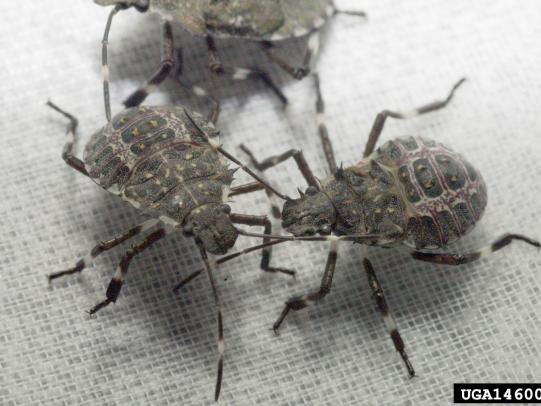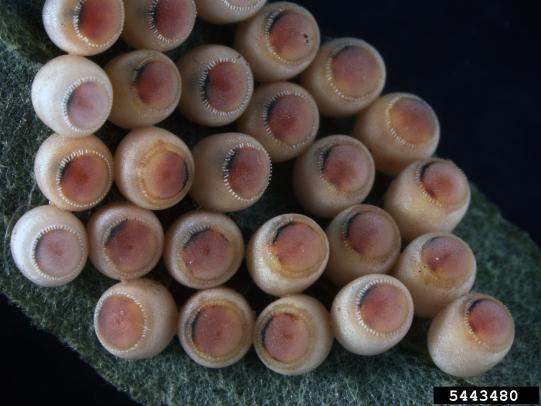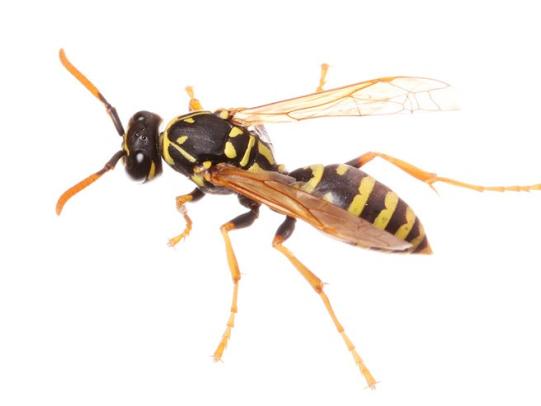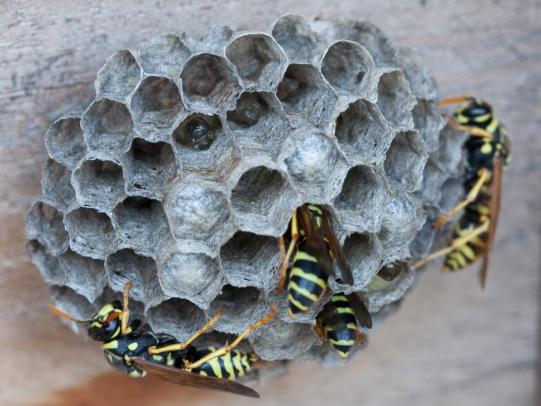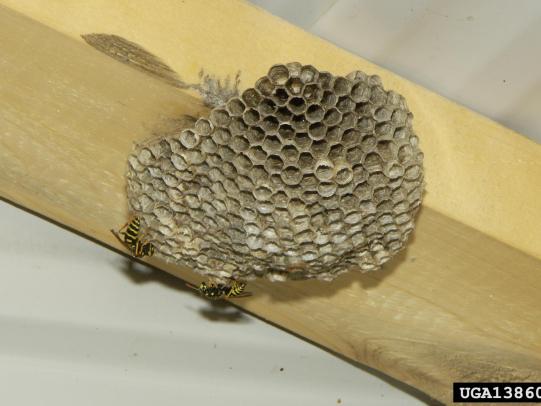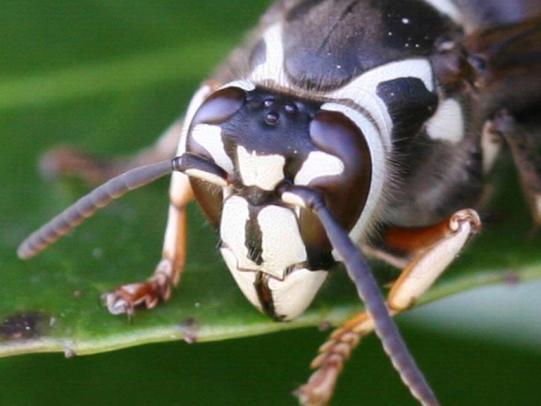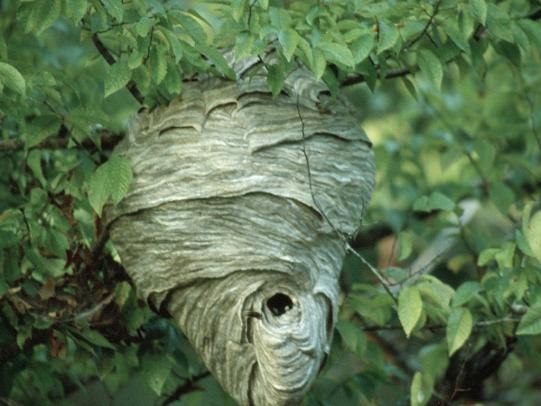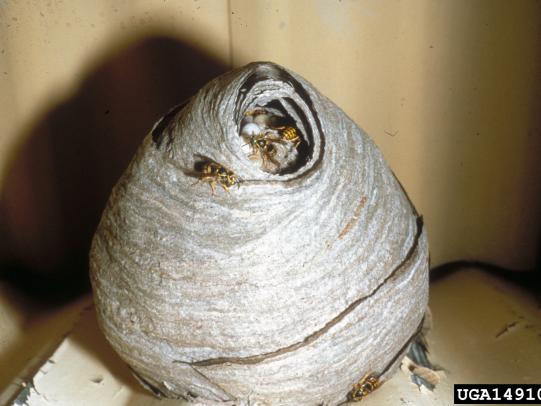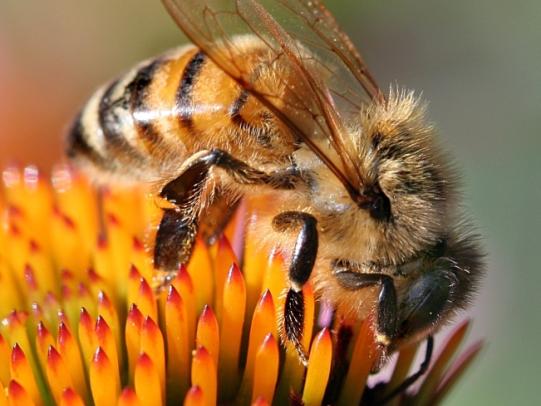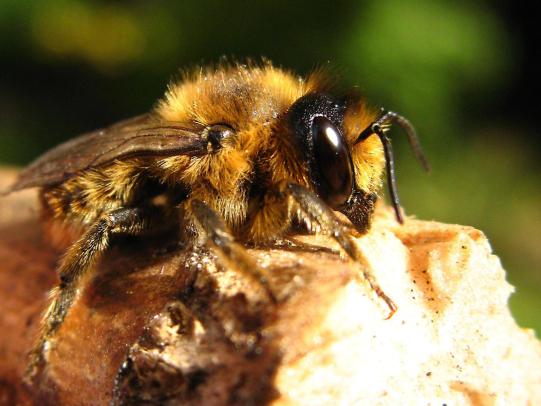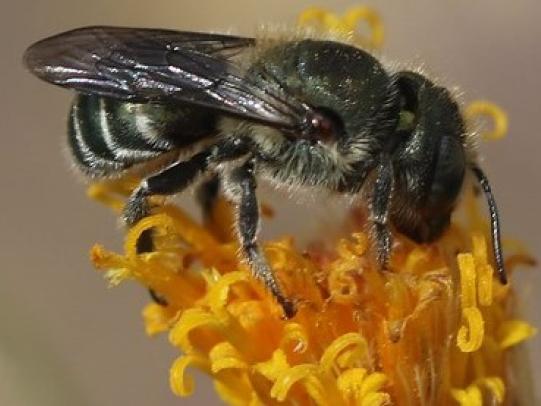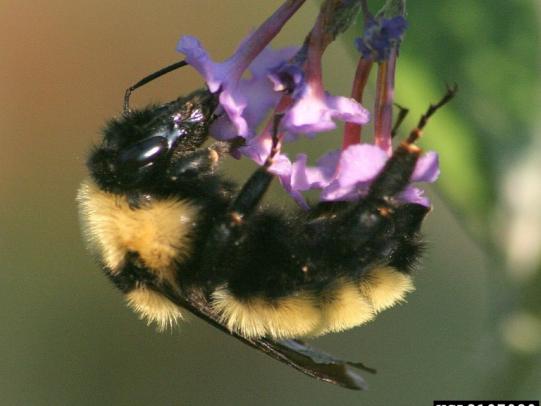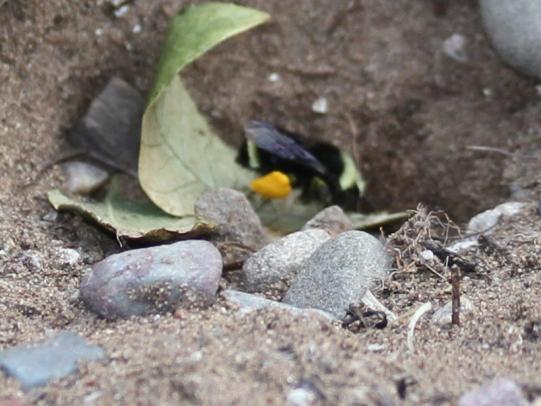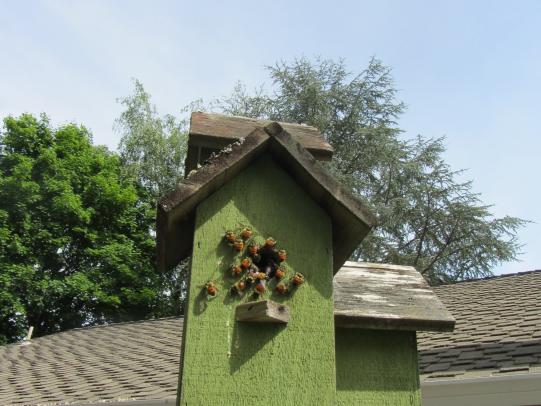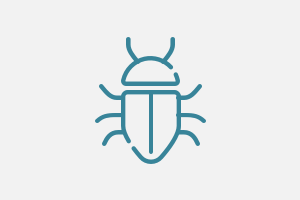Steven Valley, Oregon Department of Agriculture, Bugwood.org
Los adultos miden aproximadamente 5/8 de pulgada de largo y son de color marrón jaspeado. Las características que los identifican son:
- Bandas blancas distintivas en las antenas oscuras.
- Margen liso en el borde frontal de los “hombros”.
- Bandas blancas en los costados de las alas.
- Bandas blancas en las patas.
- Emiten un fuerte olor parecido al del cilantro cuando se los molesta o se los aplasta.
Las ninfas inmaduras de BMSB mudan cinco veces a medida que maduran y se convierten en adultas. Cada muda se denomina “estadio”. El estadio n.° 1 (recién nacido) es negro con marcas de color rojo amarillento en el abdomen.
Las ninfas crecen con cada estadio. Los estadios más avanzados tienen manchas rectangulares en la parte posterior del abdomen. Todos los estadios tienen un margen espinoso en el borde frontal de los “hombros”.
Los huevos se ponen en grupos que varían en número entre 25 y 30 huevos. Tienen forma de barril y son de color blanco a verde pálido. Tienen espinas cortas que rodean la parte superior y están adheridos al envés de las hojas.
Chinche apestosa marrón jaspeada
Halyomorpha halys
La chinche apestosa marrón jaspeada (BSMB) es una plaga invasora de los cultivos. Se alimenta de muchas plantas y causa daños, incluidos los cultivos de hortalizas y frutas. La BMSB representa una amenaza importante para la agricultura en el noroeste del Pacífico.
La chinche apestosa marrón jaspeada en Oregón
La BMSB se descubrió en Portland en 2004 y en Vancouver, Washington, en 2010. Ahora está muy extendida en el oeste de Oregón y Washington. La avispa samurái parásita (Trissolcus japonicus) se ha introducido ampliamente y está proporcionando cierto control.
Cómo identificar la chinche apestosa marrón jaspeada
Las chinches apestosas marrones jaspeadas adultas son insectos de color marrón jaspeado, con forma de escudo, de aproximadamente 5/8 pulgadas de largo. Tienen bandas blancas distintivas en las antenas oscuras, las patas y los costados de las alas. Pueden migrar a sus viviendas en el invierno. Emiten un olor a cama cuando se los molesta.
Esté alerta e informe los avistamientos en áreas nuevas
La BSMB ya está presente en Oregón. Si cree que la ha visto en una nueva área, infórmelo a la línea directa de especies invasoras de Oregón al: 1-866-INVADER (1-888-468-2337) o use su formulario de informe en línea.
